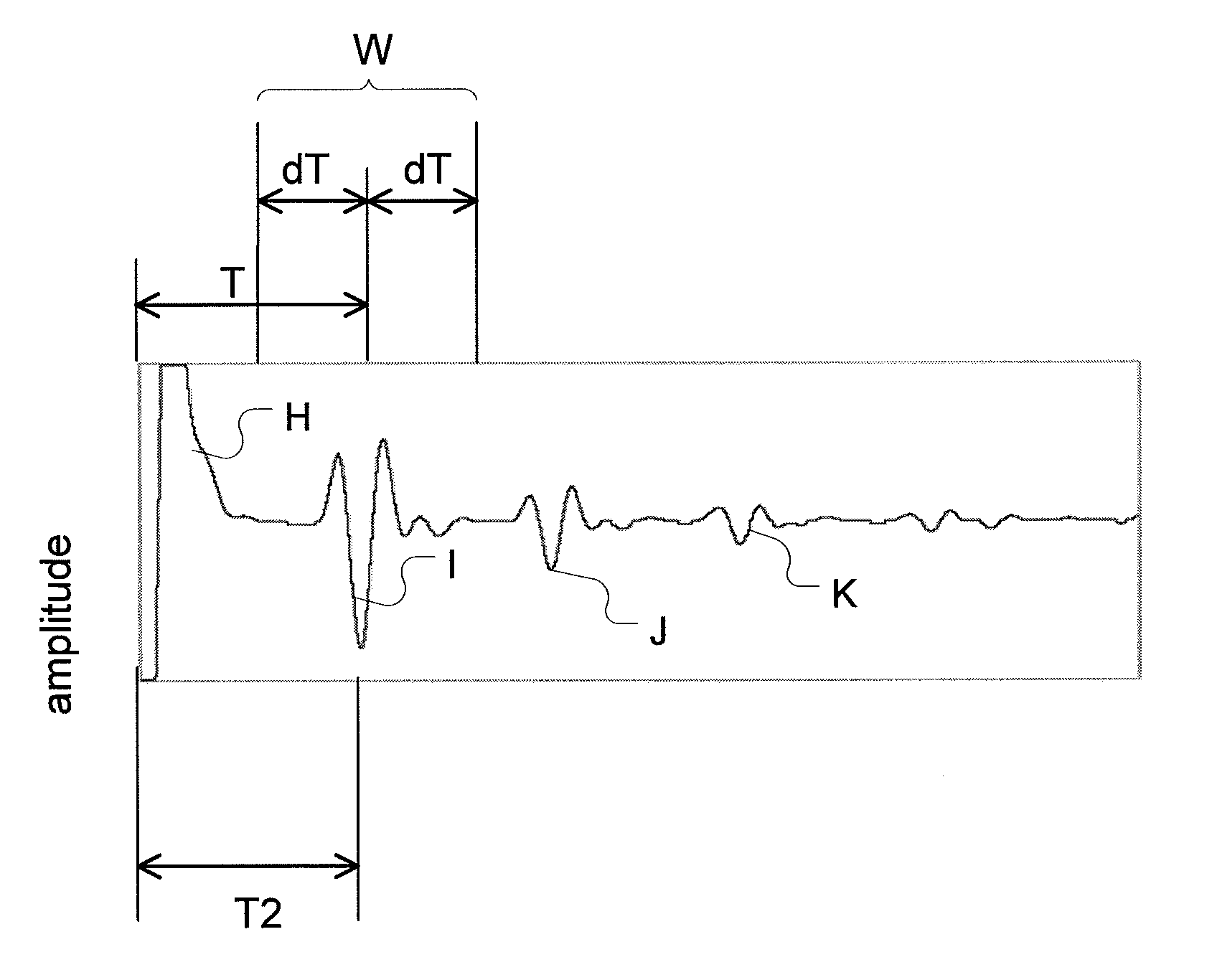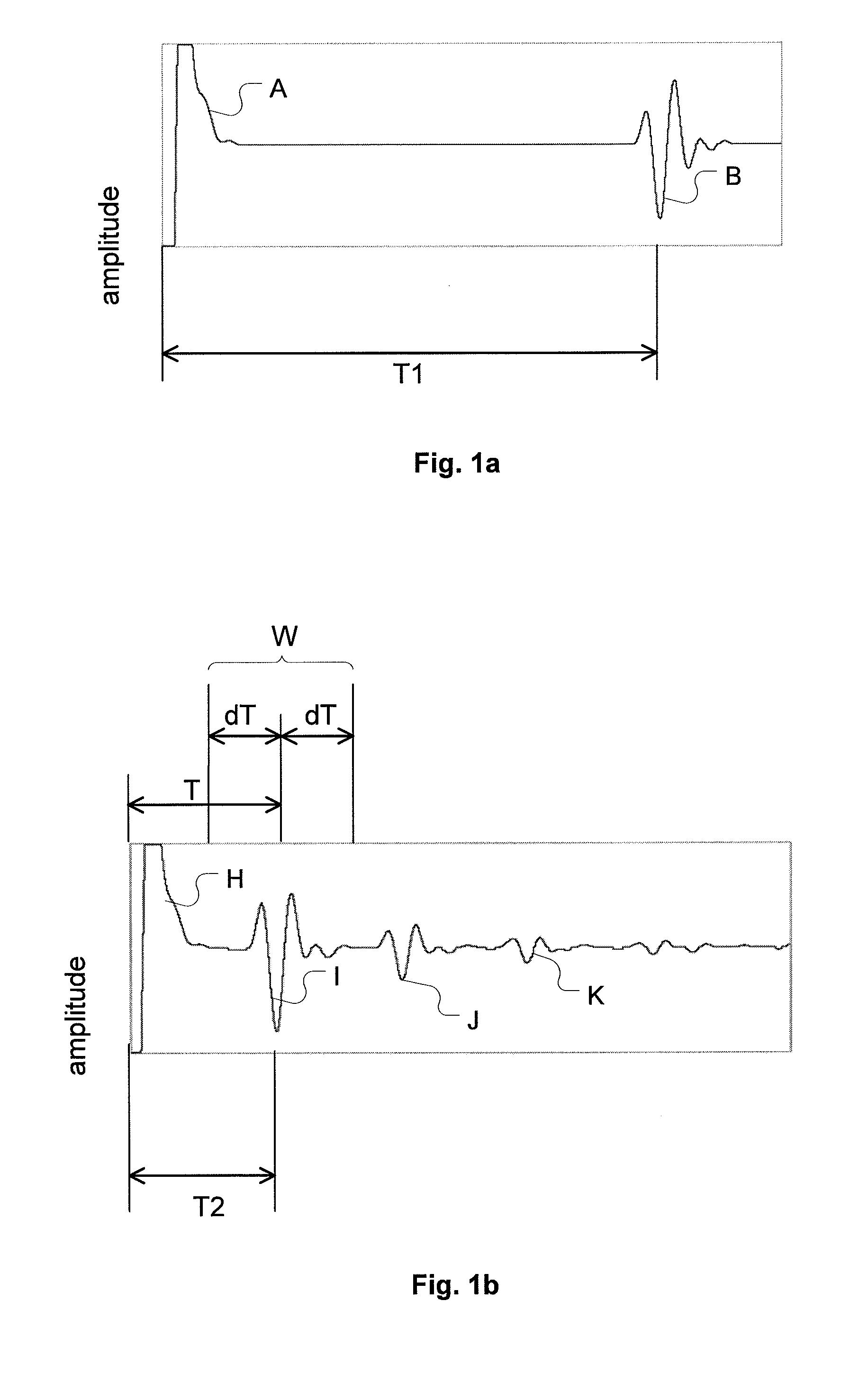Automatic calibration error detection for ultrasonic inspection devices
an ultrasonic inspection and error detection technology, applied in the direction of instruments, structural/machine measurement, analysis of solids using sonic/ultrasonic/infrasonic waves, etc., can solve the problems of erroneous calibration, erroneous inspection, and acquisition of t2 of the ultrasonic inspection device, so as to improve the calibration productivity, avoid erroneous readings, and improve calibration efficiency
- Summary
- Abstract
- Description
- Claims
- Application Information
AI Technical Summary
Benefits of technology
Problems solved by technology
Method used
Image
Examples
Embodiment Construction
[0031]As described in the Background of the Invention, during a typical Two Point Calibration procedure, a transducer selected for calibration is engaged with a thick and then a thin block with known thickness (H1 and H2 respectively). The transducer is triggered and ultrasonic echo signals are captured by the UT device. Typical waveforms are plotted in FIGS. 1a and 1b.
[0032]Referring to FIGS. 1a and 1b, the ultrasonic waveforms reflected from the thick and the thin blocks are shown respectively. For both FIGS. 1a and 1b, the X-axis depicts the time required for the ultrasonic signals to travel to and be reflected from the backwall boundary of the testing objects, namely the thick block and the thin block. The Y-axis is the ultrasonic echo signal amplitude detected by the UT device.
[0033]In FIG. 1a, A represents the excitation pulse of the ultrasonic signal. B represents the first echo signal from the bottom boundary of the thick block which is detected by the UT device. T1 is the ...
PUM
| Property | Measurement | Unit |
|---|---|---|
| ultrasonic | aaaaa | aaaaa |
| thickness | aaaaa | aaaaa |
| time-of-flight | aaaaa | aaaaa |
Abstract
Description
Claims
Application Information
 Login to View More
Login to View More - R&D
- Intellectual Property
- Life Sciences
- Materials
- Tech Scout
- Unparalleled Data Quality
- Higher Quality Content
- 60% Fewer Hallucinations
Browse by: Latest US Patents, China's latest patents, Technical Efficacy Thesaurus, Application Domain, Technology Topic, Popular Technical Reports.
© 2025 PatSnap. All rights reserved.Legal|Privacy policy|Modern Slavery Act Transparency Statement|Sitemap|About US| Contact US: help@patsnap.com



